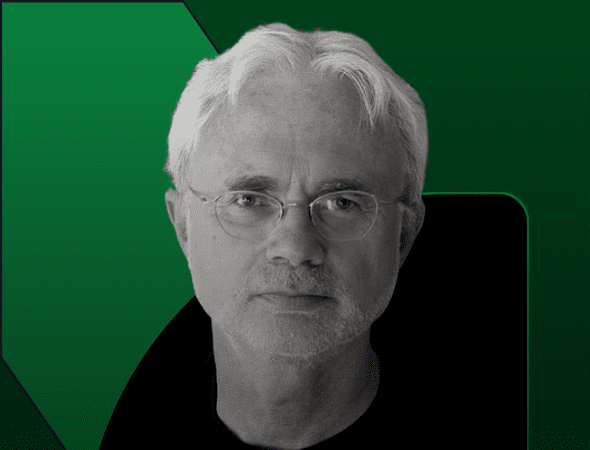ADAMS: Short Ride in a Fast Machine
by Jeff Counts
THE COMPOSER– JOHN ADAMS (b. 1947) – Whether you call John Adams a minimalist or a post-minimalist or care one whit about the distinction, you can acknowledge that his contributions to the American classical music tradition place him above such stylistic debate. Adams is among the rare but notable spiritual successors to Charles Ives, a man whose eclecticism also defied attempts at easy classification. The music of both men projects a fascination with the conflation of ideas and elements which, for Adams, grew out of childhood experiences in a household where “Benny Goodman and Mozart were not separated.” Through his irreverent charm and boundless productivity, the road from “expressionism” back to plain-old “expression” was open to all.

THE HISTORY– Commissioned by Michael Tilson Thomas as a music festival curtain-raiser, Short Ride in a Fast Machine was composed in 1986. A thrilling 4-minute sprint of color and rhythm, this fanfare is built from familiar stuff. From its motoric undergirding to its unpretentious consonance, Short Ride in a Fast Machine refracts the rigors of minimalist technique through the prism of Adams’ own personality. The resulting experience, while fully recognizable as linguistic syntax, also serves up the subjective pleasures that have become a staple of this composer’s singular voice. Speaking of voice, nobody speaks or writes about the music of John Adams better than John Adams. In a brief video on his website, Adams says the following about the genesis of Short Ride in a Fast Machine : “Since I had recently taken a ride in a very fancy Italian sportscar driven by a friend of mine, I had not yet recovered from that rather terrifying experience,” Adams relates, “and it was somewhat still on my brain when I began to think about what kind of fanfare I would write.” With a characteristically impish smile, he continues by saying, “So, Short Ride in a Fast Machine is an evocation of that experience which was both thrilling and also kind of a white-knuckle anxious experience.” Adams refers to the omnipresent woodblock that opens the piece as a “rhythmic gauntlet through which the orchestra has to pass” and uses that “resolute and inflexible pulse” to fragment various attempts by the brass instruments to settle into a proper celebratory state. “It’s only at the end of the piece,” he tells us, “when the woodblock finally stops that the orchestra suddenly feels free, as if it’s the third stage of a rocket that’s finally broken loose of Earth’s gravity.” Though technically demanding, Short Ride in a Fast Machine has earned a place in the standard repertory of orchestras around the world, something very few late-20th century works can boast.
THE WORLD– Elsewhere in 1986, the nuclear disaster at Chernobyl occurred, Halley’s Comet visited Earth’s sky, the Space Shuttle Challenger exploded 73 seconds after liftoff, and Auschwitz survivor Elie Wiesel won the Nobel Peace Prize.
THE CONNECTION– The most recent performances of Short Ride in a Fast Machine by Utah Symphony where in 2007 under the baton of Keith Lockhart.











